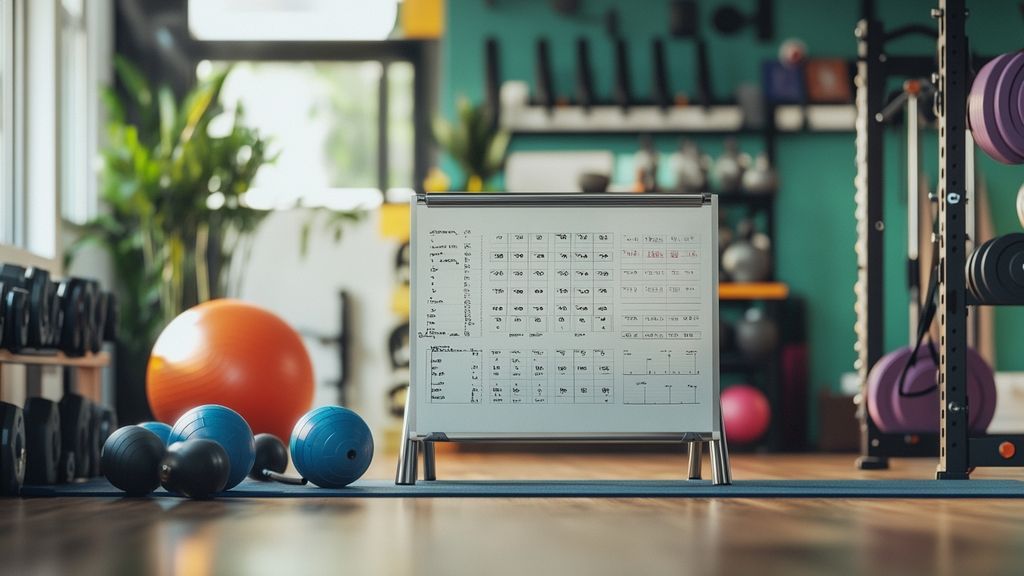Creating a well-structured workout routine can be daunting, especially without the guidance of a coach. However, many fitness enthusiasts successfully navigate this journey, achieving their personal goals through dedication and knowledge. With the right framework, you can design your own workouts that align with your fitness aspirations, whether you’re aiming to build strength, improve endurance, or enhance overall well-being.
This guide will provide you with essential steps and tips to structure an effective workout regimen without needing a coach. By applying these principles, you can create a solid foundation for your fitness journey while enjoying the process of personal training at home or in the gym.
Understanding Your Fitness Goals
Before starting any workout program, it is vital to clarify your fitness goals. Are you looking to lose weight, gain muscle, improve endurance, or increase flexibility? Each objective will require a different approach and specific exercises tailored to meet these demands.
Defining Specific Objectives
Discussing your goals with clarity is key. Instead of saying, ‘I want to get fit,’ consider a more particular statement such as, ‘I want to run a 5K within three months.’ This level of specificity allows for a focused workout plan.
Setting Realistic Expectations
Keep in mind the importance of setting realistic expectations. Your goal should be achievable yet challenging. If you’re new to fitness, aiming to exercise five days a week may be unrealistic. Instead, consider starting with three days and gradually increasing the frequency as your fitness level improves.
Choosing Your Training Split

Your training split refers to how you structure your workout days throughout the week. Many effective workout routines follow a 3 to 4 day split, which is often sufficient for building strength and muscle while allowing for adequate recovery time.
Popular Training Splits
There are several commonly used training splits you can implement:
- 3-Day Full Body Workout: Ideal for beginners, encompassing full-body workouts three times a week.
- 4-Day Upper/Lower Split: Alternates between upper and lower body workouts, allowing for more focused sessions.
- 3-Day Push, Pull, Legs Split: Categorizes workouts by movement type, balancing muscle groups effectively.
Experimenting with different splits will help you discover what suits your lifestyle and recovery.
Adapting Your Split to Your Schedule
Life can be hectic, therefore flexibility in your workout schedule is crucial. If you know certain days will consistently be busy, plan your workouts around them. Using an adaptable schedule will enhance compliance and prevent any frustration if life interferes with your initial plan.
Listening to Your Body
A crucial component of structuring your workouts is paying attention to how your body feels. Adjust your training frequency and intensity based on your energy levels, recovery, and performance. If you feel fatigued or overworked, consider taking a rest day or switching to a lighter workout.
Incorporating Compound Movements
Integrating compound movements into your workouts is a proven strategy for maximizing effectiveness. These exercises engage multiple muscle groups, leading to greater strength gains and calorie expenditure.
Essential Compound Exercises
Focus on the following key movements:
- Squats: Engages your quads, hamstrings, and glutes, essential for lower body strength.
- Deadlifts: A core exercise targeting the posterior chain, providing overall strength and stability.
- Bench Press: Excellent for developing upper body strength, particularly in the chest and arms.
Incorporating these exercises into your routine helps build a strong foundation in functional movement.
Structure for Your Workouts
After identifying your training split and key movements, structure the sessions themselves. Aim to include 2 to 3 heavy compound movements along with isolation exercises to target specific muscle groups.
For example, if your workout focuses on the legs, it might look like this:
- Squats – 3 sets of 6-8 reps
- Deadlifts – 3 sets of 6-8 reps
- Leg Press – 4 sets of 10-12 reps
- Calf Raises – 4 sets of 12-15 reps
By balancing compound movements with isolation work, you create a robust program that encourages muscle growth while preventing plateaus.
Planning Your Reps and Sets

Once you’ve solidified your workout structure, understanding how to plan your reps and sets becomes essential for achieving results. A well-thought-out approach will enhance your gains while promoting recovery.
General Guidelines
A good rule of thumb is:
- Compound Exercises: 5-10 reps per set for strength.
- Isolation Exercises: 8-15 reps per set for hypertrophy.
- Leg Exercises: Increasing the range from 5-20 reps to improve endurance and strength.
By tailoring your rep scheme to the type of exercise, you allow your body to adapt and grow efficiently.
Monitoring Your Progress
To effectively reach your fitness goals, consistently updating and monitoring your progress is critical. Track your workouts in a notebook or fitness app, noting weights used, reps completed, and how you feel during each session.
If you find certain exercises becoming too easy, it may be time to increase the weights or modify the reps. Remember, progressive overload is essential for continuous improvement, especially in a solo workout regimen.
Staying Motivated and Engaged
Training without a coach can sometimes lead to feelings of isolation or lack of motivation. Therefore, it’s important to find ways to stay engaged and excited about your workouts.
Connecting with Fitness Communities
Consider joining online fitness communities or local workout groups. Sharing your progress, discussing challenges, and gaining inspiration from others can significantly enhance your experience. Platforms like Instagram and Facebook often offer dedicated fitness groups where individuals share their journeys and tips.
Utilizing Fitness Apps
With technology evolving, a variety of workout apps can serve as your digital coach. These tools often provide tailored plans, exercise demonstrations, and progression tracking.
Using an app helps maintain accountability and enthusiasm for your program while ensuring you are following a structured approach. Various options are available for different training styles, so explore and find the one that resonates with your goals and preferences.
